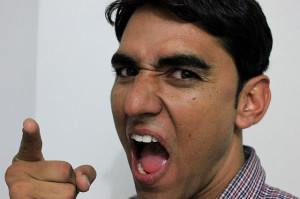
If you work in any organization long enough you will run into a disruptive, someone exhibiting disruptive behavior. I can speak first-hand for the profession of medicine. Estimates suggest that just 3-5% of physicians are responsible for most of the disruptive behavior in medicine. But, you can find disruptive behavior in any organization.
While 3-5% doesn’t sound like much, a disruptive employee can reek havoc amongst the other employees. Following Pareto’s Principle, 80% of the problems an organization may face can come from a few individuals displaying disruptive behavior.
Disruptive behavior can have negative effects on patients, clients or customers. Within an organization, such behavior can be a steady drain on morale thereby decreasing productivity and leading to high staff turnover which can further degrade work quality.
Even if you have an organization replete with competent and engaged employees, a disruptive employee can create an environment conducive to employee burnout.
At the extreme, disruptive behavior can undermine safety, create hostile work environments and even generate dangerous work related interactions and encounters.
There is often a reluctance to deal with disruptive behavior. There is always the hope that the individual will one day see the light and just stop their bad and intolerable behavior. This strategy falls into the category of WFHTFO (waiting for hell to freeze over). Unfortunately, disruptive individuals never see the light until they feel some heat.
Other reasons for a reluctance to confront individuals displaying disruptive behavior include financial motives, threat of litigation or some other form of retribution, or even fear of violence. Studies have demonstrated very clearly, the costs of allowing disruptive behavior to continue are far higher.
Due to the high costs of disruptive behavior it is very important to recognize the associated behavior patterns and give prompt attention to the individual(s) involved. Here are some examples of disruptive behavior:
- Cursing, profane or disrespectful language
- Yelling, screaming, shouting in anger
- Berating, belittling or insulting others
- Sexual advances, comments, innuendo
- Intimidation, sarcasm, stinging criticism
- Nonverbal lewd gestures
- Passive-aggressive or vindictive behavior
- Throwing of objects
- Bullying, intimidating or demeaning conversations and communications
- Criticizing other employees, staff, clients, employer or other organizations in front of others
Disruptive behavior in individuals must be dealt with squarely and firmly. If the individual is an otherwise valued employee then an intervention with subsequent behavioral modification training should be undertaken.
Of course, the best way to deal with disruptive behavior is to prevent such behavior in the first place. This can be easily accomplished by putting systems in place to effectively deal with aberrant workplace behavior. The following components might be included:
- The establishment of a code of conduct
- Creating a reporting and monitoring system for disruptive behavior
- Training and educating employees on disruptive behavior
- Establishing a resolution algorithm for handling an employee exhibiting disruptive behavior
An organization wide policy with uniform enforcement relating to disruptive behavior can make for a much more pleasant, safe, and effective environment in which to work. This easily translates into the production of a higher quality product or service.
Have you ever noticed disruptive behavior in your past or present work environments? If so, what was the outcome? How did it affect your work or the work of those around you?
working in the Veterans health System in Miami, i have encountered in the logistical dept. Three employees that daily are very disruptive to the work environment and getting away with it. I am new and have tolorated it for three months. But ready to bring it to their attention and if they don’t stop this behavior take it throught the channels. I can’t believe adults behaving like spoil high school kids…